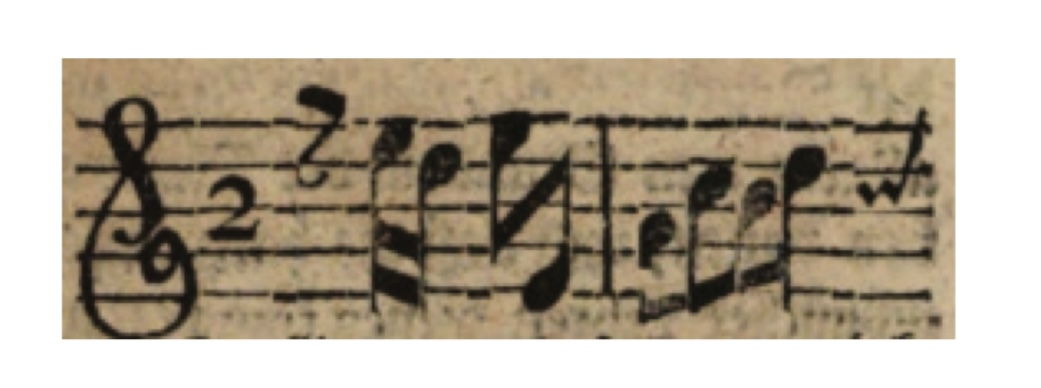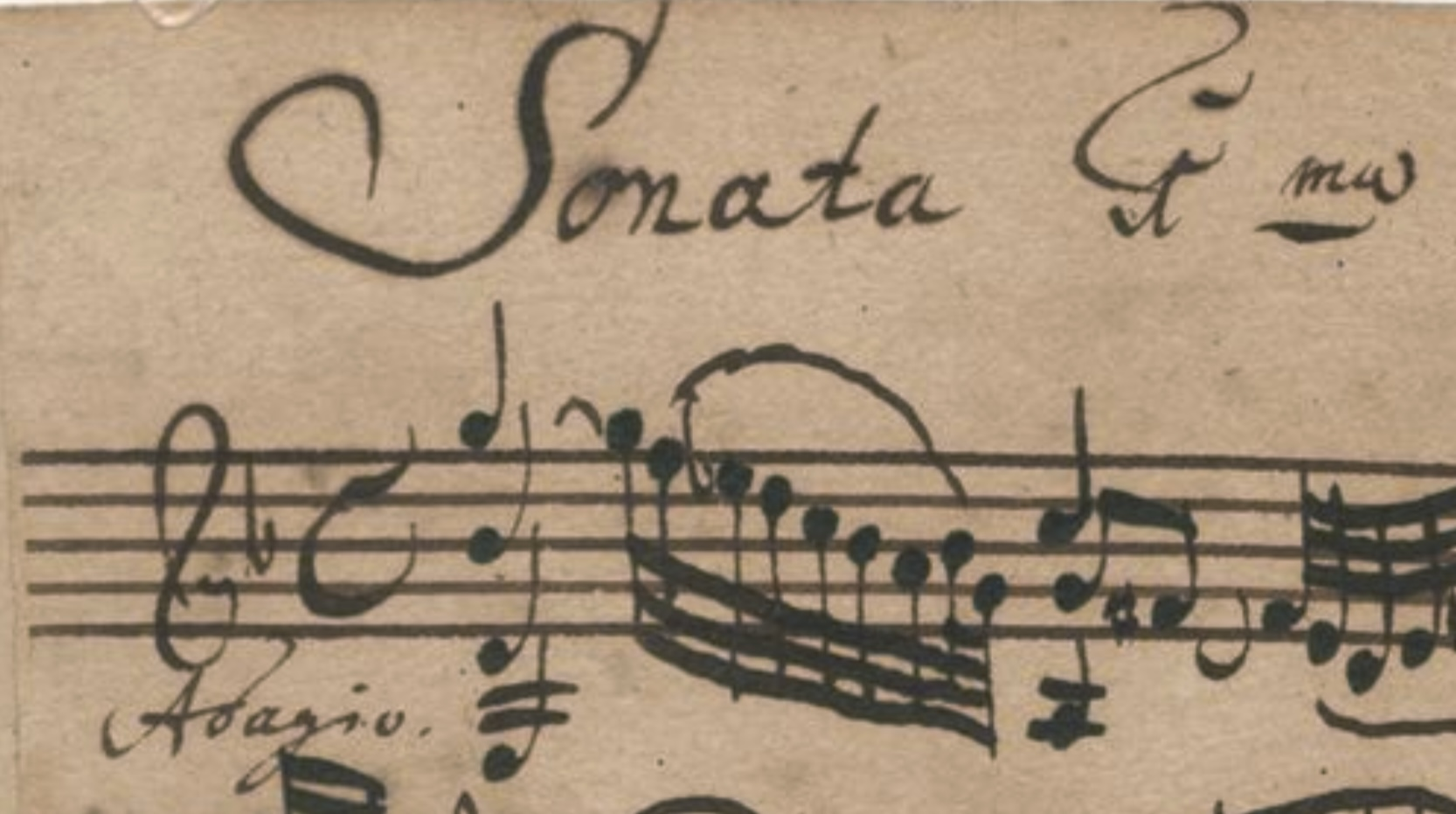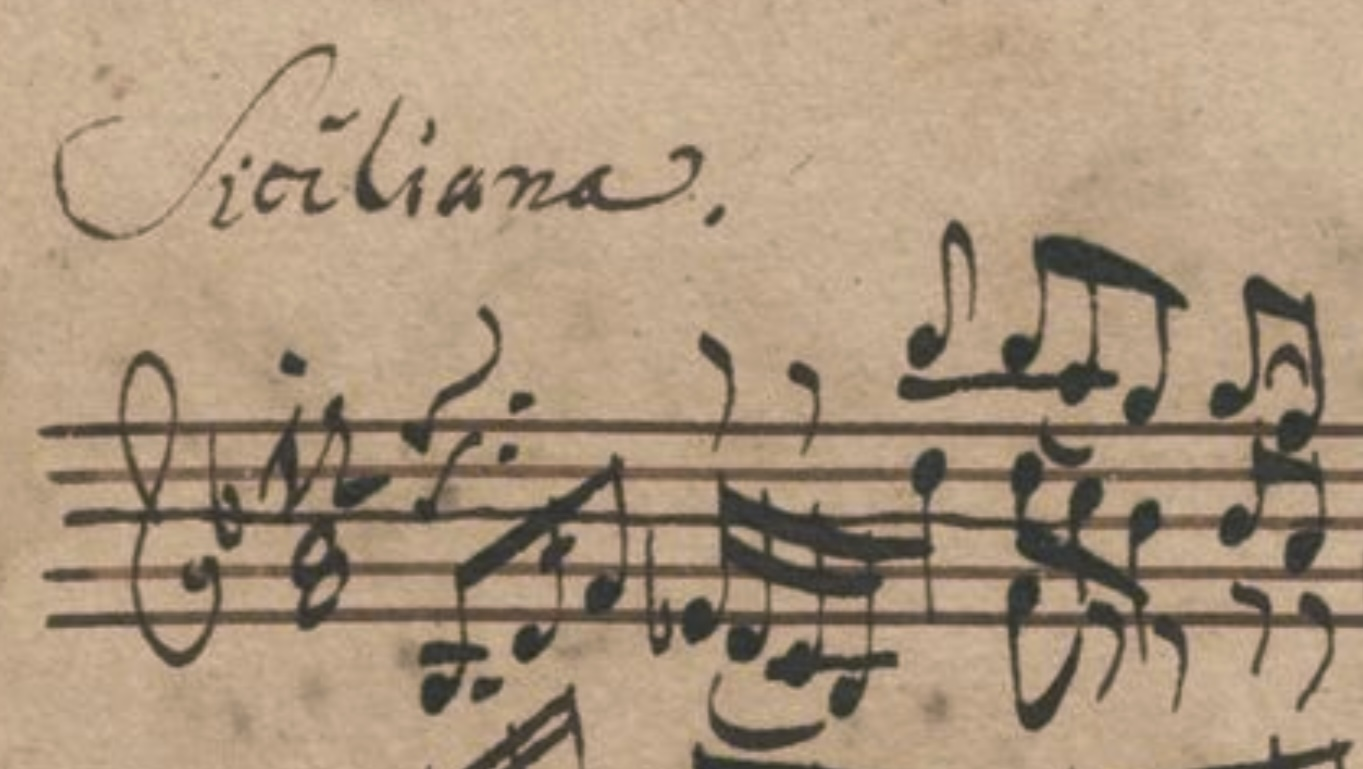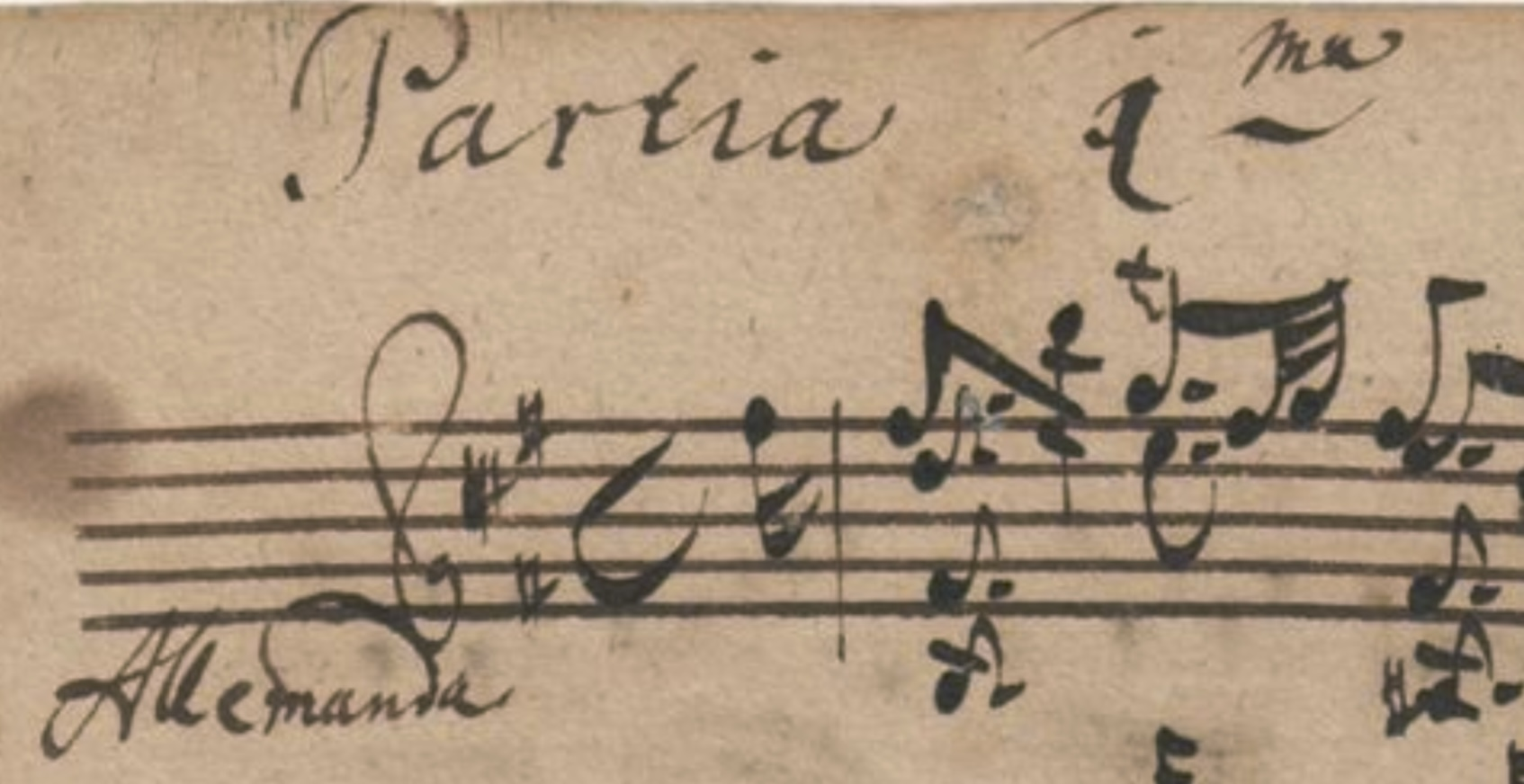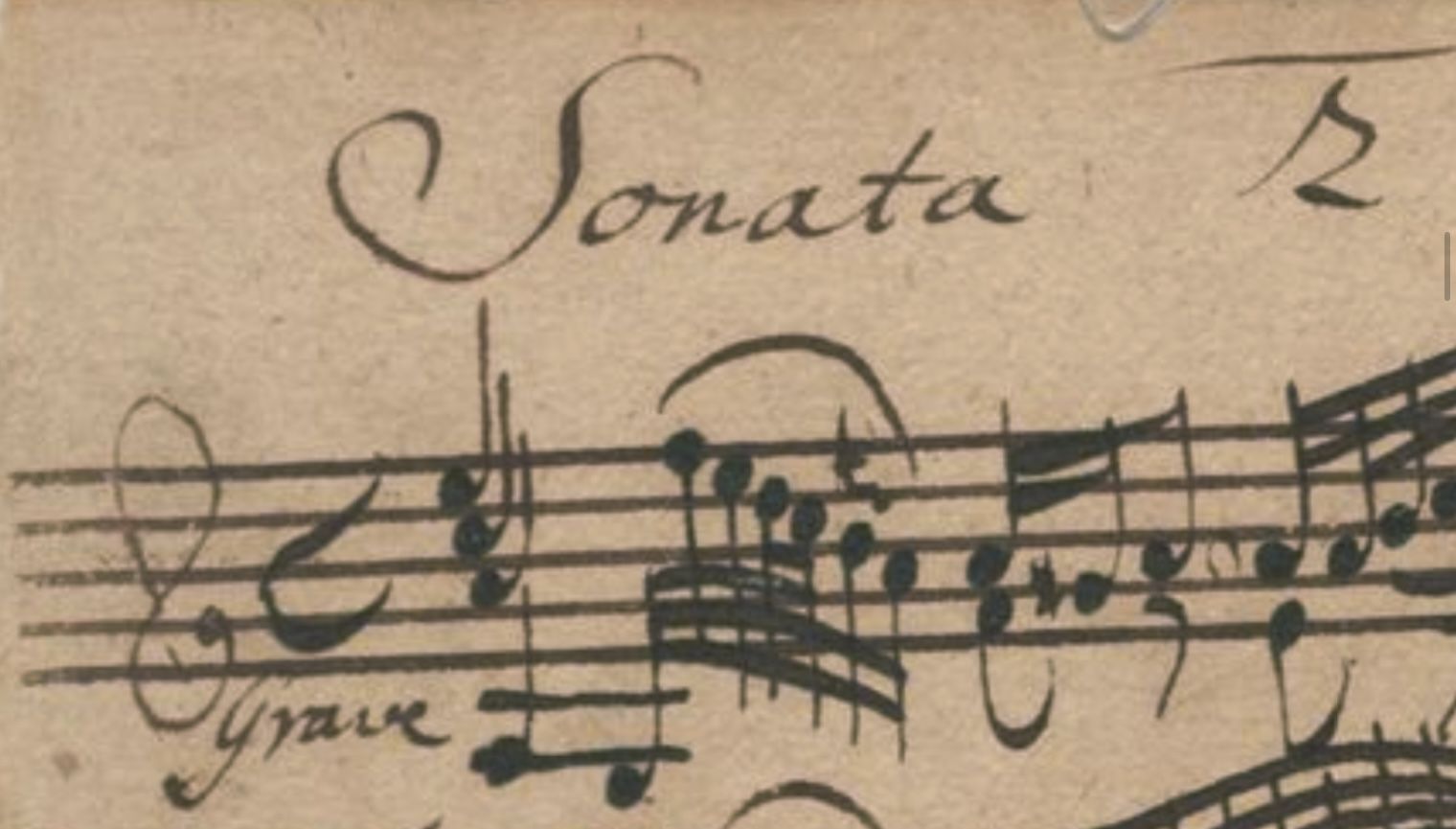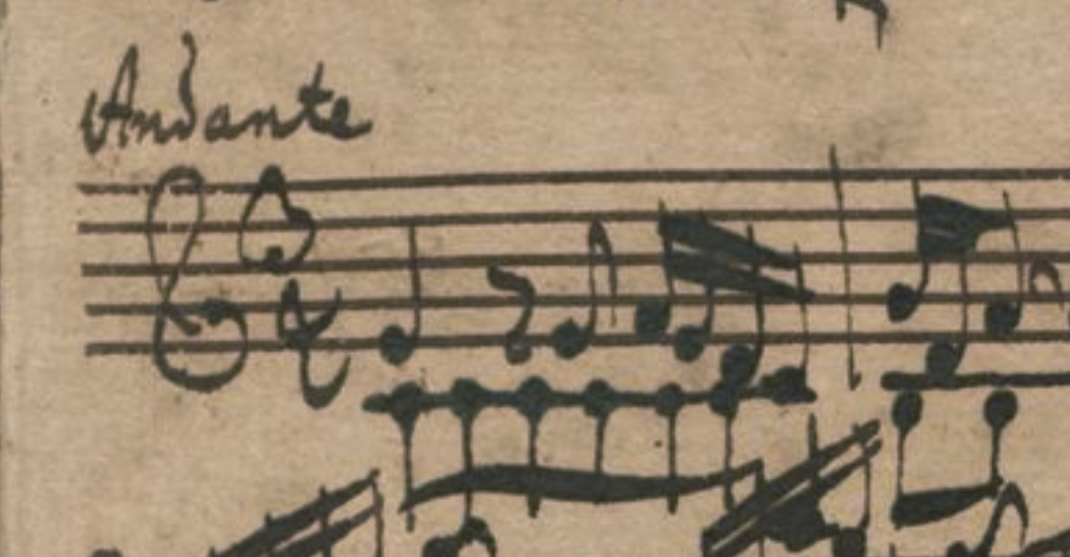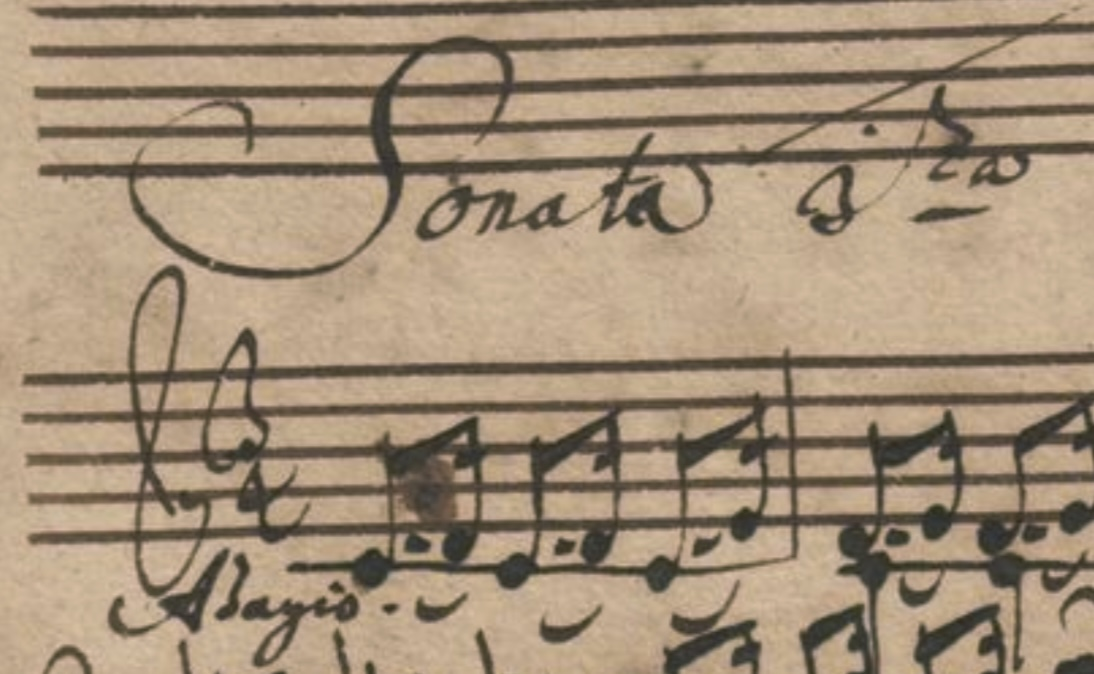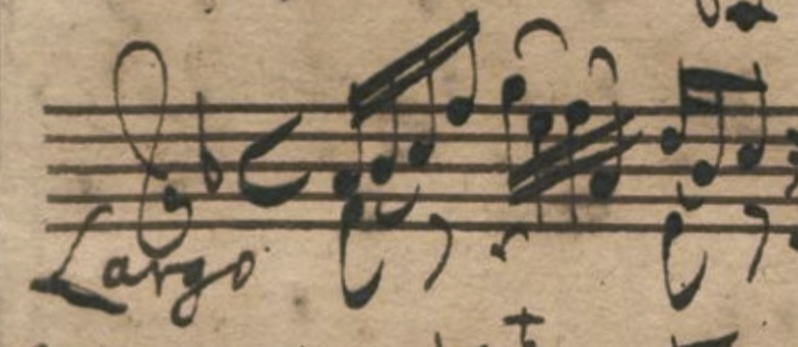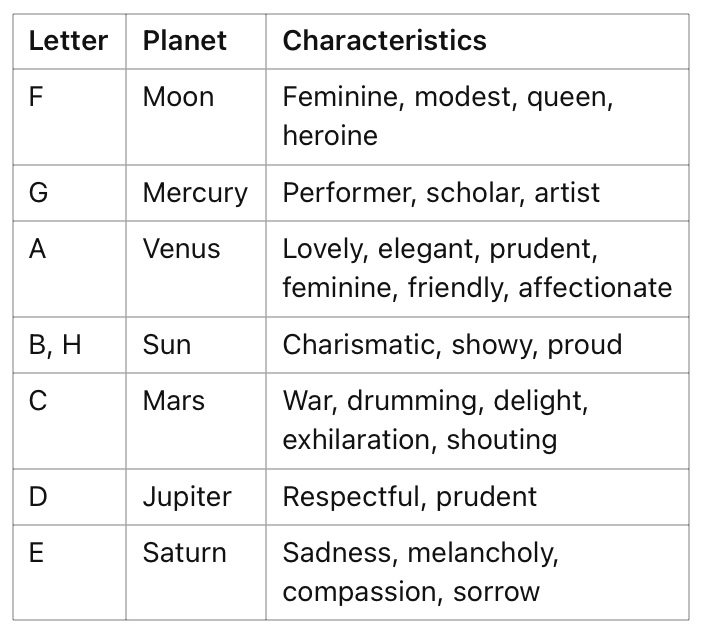back to Table of contents
Johann Mattheson (1681-1764), contemporary of Bachーreknowned composer at that time, critic, lexicographer and music theorist writes about Key Characteristics in his first published writing, Das neu-eröffnete Orchestre (1713).
We cannot say that Mattheson’s key characteristics reflect common ideas shared by every composers in his era and region. However, I would at least like to reference them to see if they align or if we can discover any new aspects with Sei Solo.
Who would believe that these eight short notes would be so fruitful as to bring forth a counterpoint of more than a whole sheet of music paper, without unusual extension, and quite naturally? And yet the skilled and in this species particularly fortunate Bach has set just this before the world; indeed he has in addition introduced the subject here and there in retrograde motion."3
Yoh Murakami, a Japanese translator of Johann Mattheson’s Das Neu-eröffnete Orchestre, and Assistant Professor in aeronautical system at Shinshu University describes that "Mattheson was an ever-ardent writer as well as composer, singer, organist, editor besides diplomat in the early 18th century and left more than twenty books on music, and key characteristics are specific characteristics, or ethos, arguably associated with each key in tonal music, and key characteristics are specific characteristics, or ethos, arguably associated with each key in tonal music. The possible causes that bring about key characteristics may include actual acoustic differences in keys due to, for instance, unequal temperament. Still, such mental factors as allegorical meanings in the cultural and historical context should also affect how the hearer recognises key characters. Strangely enough, Mattheson never further developed his discussion about key characterictics later in his writings."4
Murakami advocates that Mattheson’s key characteristics may have had been influenced by an astrological analogy to seven musical notes, although Mattheson himself were strongly against Neoplatonic comprehension of musical theory.
Also Manfred Bukofzer mentions that "The idea that each of the twelve modes expresses a certain character of passion goes back to ancient music, which, however, did not invent, but only systematized these correspondences. It is unnecessary in my present context to enter into this much discussed problem; suffice it to say that these coordinations have cosmological, not musical reasons. Certain strings and tones were coordinated with certain planets, and the attribution of corresponding effects to music is due to astrology. This musical astrology is not confined to the ancient world, but is also found in China, Babylonia, India, and Java. In the baroque period these cosmo-musical associations of different characters have already become conventional rules which have lost much of their original connotation and are retained merely as part of the general humanist equipment."5
I am very much interested in this topic, but I will explore it further next time.
Let’s examine the keys of Sei Solo and their characteristics as described by Mattheson, in order.
Sonata No.1 BWV 1001 G minor - almost “the most beautiful key — uncommon grace and complaisance.
3rd mvt. B-flat Major - diverting and showy; somewhat modest; both magnificent and delicate.
Partita No.1 BWV 1002 B minor - bizarre, moody, and melancholy, and therefore seldom used.
Sonata No.2 BWV 1003 A minor - plaintive, dignified, and relaxed.
3rd mvt. C Major (see below in BWV 1005)
Partita No.2 BWV 1004 D minor - devout, calm, grand, agreeable, and expressive of contentment.
Sonata No.3 BWV 1005 C Major - rude and impertinent character, but suited for the expression of joy.
3rd mvt. F Major - express the most beautiful sentiments, whether those be generosity, steadfastness, love, or whatever else may be high on the list of virtues.
Partita No.3 BWV 1006 E Major - desperate or fatal sadness; piercing, sorrowful, and penetrating.
I was struck by the description of E Major. It is often considered such a brilliant key, yet the way it was portrayed seemed completely opposite. In my opinion, inspired by my violin professor Ryo Terakado, Sei Solo serves as a tribute to Bach’s late wife, Maria Barbara. Bach seems to be on a journey of self-discovery through this music, culminating in the splendid E Major of the third Partita as a moment of resolution. However, I also considered Mattheson’s interpretation, which suggests a more painful message beneath the surface, with Bach struggling through his emotions while still envisioning a sense of spiritual or heavenly resolution.
I find Bach's use of the subdominant remarkable. He frequently incorporates it in both melodies and harmonies, creating a powerful effect in his pieces. In the third movement of Sonata No. 3, the Largo, Bach chooses a subdominant key that sounds incredibly beautiful, gentle, and fleeting. The choice feels like a perfect match for Mattheson’s description, adding to the emotional depth of the piece. Through this harmonic choice, Bach not only enhances the beauty of music but also reinforces the emotional journey within Sei Solo, filled with both vulnerability and the quest for spiritual peace.
Another intriguing topic proposed by Murakami is Bartolus' (1578-1630?) theory of musical character, presented in his Musica Mathematica (1614), which is based on the geocentric model of the universe aligns closely with the tonal character theory of Mattheson mentioned earlier.6
Bartolus Abraham (theologian, music theorist, and astronomer), proposes that the Earth is at the centre of the universe and that the movements of the planets create specific musical intervals. He suggests that a person’s musical preferences are influenced by the dominant planet in their life. This theory connects the macrocosm (the planetary movements) with the microcosm (the human body), following ancient Pythagorean and Neoplatonic thought. While Bartolus' ideas are not entirely original, they draw from earlier thinkers like Pythagoras, Kepler, and Lippius, and had an influence on contemporary music theorists, particularly because he published his work in German rather than Latin. Murakami shows a table that outlines the correspondence between the seven notes and the seven planets, and their associated characteristics (planetary attributes or emotions evoked in the listener) by Bartolus :
When comparing Bartolus' theory of musical character with Mattheson's tonal character theory, several alignments are evident. For example, Mattheson’s character for F major matches the qualities of Selene, the goddess of the moon. Regarding G, Bartolus only mentions a profession rather than a characteristic, but when we consider that Mercury is the guardian of artists and scholars, and that the lively youth god Hermes is also the protector of eloquence, Mattheson’s tonal characters for G minor and G major match perfectly. Similarly, Mattheson’s view of A major aligns with Aphrodite’s dual nature as both a goddess of beauty, love and sensuality, while A minor reflects more of Selene’s noble character. Bartolus' musical character for C and Mattheson’s character for C major are also very similar, which is closely aligned with purity and innocence. Bartolus assigns piety to D, corresponding to Jupiter, which aligns with Mattheson’s characterization of D minor. Zeus, the god of thunder, fits Mattheson’s character for D major. Bartolus' E and Mattheson’s characters for E minor (and E major!!) also align very closely, and there is no doubt that Saturn, as the planet associated with melancholy and the artist in the Renaissance, is relevant here.
Bach was a conservative composer who was still very much attached to the old, although later trying the new, such as the Rococo style even though he was not keen on it. He attended to a Lutheran school and must have been familiar with ancient history, Greek mythology and astronomy, as well as Harmonian thought, which cleverly combined Pythagorean and Christian theology, as in Werckmeister's Harmonologia musica (1702). I think it is highly possible to connect his works with the Neoplatonic comprehension of musical theory as described above.
_______________
1Katarzyna Korpanty, Johann Sebastian Bach in the Eyes of Johann Mattheson: On the Cantata ‘Ich hatte viel Bekümmernis’, BWV 21 (Institute of Art, Polish Academy of Sciences, 2024), pp.32, 34-35.
2Johann Mattheson, Kern musicalischer Wissenschaft, Hamburg 1737.
3'Wer sollte wol dencken, daß diese acht kurze Noten so fruchtbar wären, einen Contrapunct von mehr, als einem gantzen Bogen, ohne sonderbarer Ausdehnung, gantz natürlich hervorzubringen? Und dennoch hat solches der künstliche, und in dieser Gattung besonders glückliche Bach in Leipzig ieder-mann vor Augen geleget, ja, noch dazu den Satz, hin und wieder, rücklings eingeführet', quoted after J. Mattheson, Kern melodischer Wissenschaft, p.147. Translation after The New Bach Reader (no. 326) except for the final expression, 'rücklings', which was mistranslated as 'in inversion'.
4Yoh Murakami, Johann Mattheson’s Key Characteristics and its Residual Ideas from Renaissance Magic (The OUJ Journal of Arts and Sciences Vol.2, The Open University of Japan, 2023), p.237.
5Manfred Bukofzer, Allegory in Baroque Music (JSTOR, Journal of the Warburg and Courtauld Institutes, The University of Chicago Press, 1939), p.5.
6 Murakami (n 4), p.241.
Next: Chapter IV. Gematria, Bach and numbers
back to Table of contents
